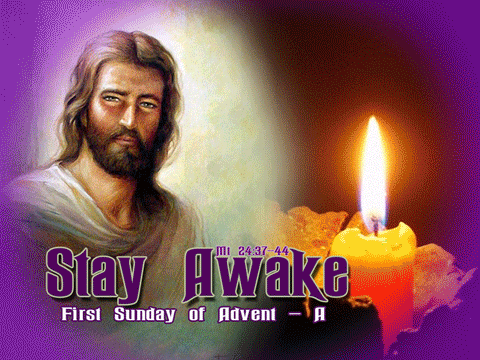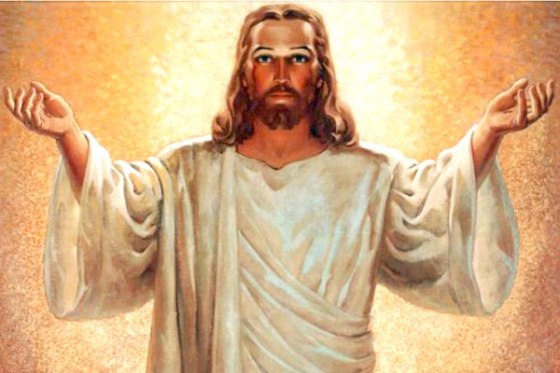Sunday, November 29, 2015
November 29
Establishing contemplative communities in the US: The early history
Poor Clare Sisters Maddelena (1834-1905) and Constance (1836-1902) Bentivoglio’s 1875 arrival in New York City was unannounced and unexpected, but they were not worried. Their plan to establish a contemplative foundation in Belle Prairie, Minnesota, proved unsuccessful, but the two Italian immigrants — who were also biological sisters — were confident that Archbishop (later Cardinal) John McCloskey (1864-1885) would allow them to remain in the city. After all, they reasoned, Pius IX had clearly instructed them to bring the Poor Clares to the United States. Since the nation’s largest city boasted a great number of Catholics, it seemed a logical place for them to begin their ministry. According to Marianus Fiege, OFM, Cap., the pope is reported to have said, “You, my dear daughters, must be to the people of your new home an example by your detachment from all earthly things. This will be to them a silent preaching, which together with your prayers and your communion with God, will obtain for many souls the grace to understand that true happiness is not found in material temporal things.” 1
Much to the nuns’ surprise, McCloskey’s answer was a firm, “No.” Fiege notes that Sister Maddelena explained that the cardinal informed the nuns “that he could not admit us into his diocese, as he did not consider our Institute to be in keeping with the spirit of the age, and still less in accordance with the trend of the mind of the American people.” McCloskey simply had no interest in contemplative congregations of women religious residing in the Archdiocese of New York. If the sisters were to open a school, then they could stay. “[T]he time has not yet come,” he said, “for God to give to the Heads of the Church, the light to be able to understand the great value of the Contemplative Orders.”
McCloskey’s refusal to allow the contemplative Poor Clares to establish a foundation in “his” archdiocese might surprise many U.S. Catholics, who have seen church leaders criticize and investigate communities of women religious engaged in active apostolates for a number of reasons, including a perceived disagreement with church teaching. Although the recent apostolic investigation of sisters focused on active congregations, American bishops have not always been happy to have the non-controversial contemplative congregations located within their dioceses. During the 19th and early 20th centuries, church leaders found themselves in need of religious communities dedicated to active apostolates and willing to establish schools and hospitals in order to meet the material and spiritual needs of the many Catholics who were poor and uneducated. In addition, they worried that contemplative nuns would be forced to depend on contributions from willing Catholics to support themselves, money that could better be spent in other places.
In retrospect, McCloskey’s decision was not all that surprising. Even John Carroll, the first bishop in the United States, was less than happy to see contemplative nuns arrive in Maryland, especially since he believed in the importance of American children receiving a Catholic education. When the American Revolution ended, Ann Teresa Matthews (Mother Bernardina), who had left Maryland to enter a contemplative Carmelite monastery in Hoogstraeten, Belgium, along with her two nieces, Sister Mary Eleanora of St. Francis Xavier and Sister Mary Aloysia of the Blessed Trinity, were urged by some to return to the United States and open a convent. Along with Mother Clare Joseph Dickenson, a native of London, the women arrived in Port Tobacco, Maryland, on July 10, 1790, and dedicated their convent on October 15 of that year. They hold the distinction of being the first women religious to reside in the former British colonies.
The nuns’ lifestyle reflected the rule designed by Teresa of Avila, but adapted to the American Catholic situation. European monasteries were surrounded by high walls to prevent cloistered nuns from interacting with the world, for instance, but it was difficult to build such a structure in late 18th-century Maryland. The Port Tobacco monastery originally consisted of eight one-story buildings, including a priest’s house, chapel, infirmary and kitchen. In keeping with their vow of poverty, the only fire was in the kitchen. The women filled a small iron pot with coals in order to keep their cells warm in the winter. Living conditions were less than ideal; their cells were not protected from the weather, and the nuns sometimes had to shake snow off their beds on winter mornings.
Carroll graciously welcomed the Carmelites, but like New York’s McCloskey almost a century later, really wanted to attract women religious willing to serve as teachers and nurses. John Thorpe, a friend of Carroll’s, actually suggested that the bishop try and discourage the nuns from establishing a foundation in the United States. If they did insist on returning to the new nation, however, Carroll should not attempt to turn them into teachers. “If the Carmelites become teachers,” Thorpe explained, in a letter published in The John Carroll Papers, “[a]fter some time you will have neither good Teresians nor good school mistresses.”
Carroll, however, rejected Thorpe’s advice, and asked Vatican leaders to consider modifying the community’s rule so that the women would be able to teach. It was clear, he wrote, that the nuns’ “. . . example, a novelty in this country, has aroused many to serious thoughts on divine things, [but] they would be far more useful if . . . they undertook the education of girls.” Cardinal Leonardo Antonelli responded that “While [the nuns] are not to be urged to undertake the care of young girls against their rule, they should be exhorted not to refuse this work which will be pleasing to God and which is badly needed.” Antonelli’s comments were reported to Mother Bernardina Matthews, but the Carmelites chose not to transform themselves into a congregation devoted to teaching. Their ministry, they believed, was to pray for the Catholic church and its mission in the United States. Ten years later, Carroll still hoped the women would change their minds. “They have multiplied themselves considerably, and given much edification by their retirement and total seclusion from the world,” he wrote in 1800, “and I do not doubt the efficacy of their prayer in drawing down blessings on us all; but they will not concern themselves in the business of female education, tho the late Pope, soon after their arrival recommended it earnestly to them.”
The Carmelites in Port Tobacco continued to remain faithful to their rule of strict enclosure until 1830, when Archbishop James Whitefield (1828-1834), recognizing that they were unable to support themselves, suggested that they solve their financial problems by teaching in either Baltimore or Washington, D.C. The nuns agreed (did they have any choice?), but this ministry was short-lived. They simply found it was too difficult to teach and remain faithful to their rule. Even though classrooms were located outside of the cloister, for instance, only students and teachers were allowed to enter them. In addition, in order to ensure that the nuns’ primary focus remained a ministry of prayer, they were forbidden to speak about either school or their students with each other, even during periods of recreation. Despite these difficulties, the school attracted the daughters and nieces of wealthy southerners — Catholic and non-Catholic — for 20 years. The Carmelites returned to a ministry of prayer when a new archbishop, Francis Patrick Kenrick (1851-1863) decided they should resume their contemplative lifestyle.
The Carmelite foundation in Port Tobacco marked the beginning of contemplative women religious in the United States. Although the Discalced Carmelite Nuns of the Carmel of Port Tobacco are still present in Maryland, other early attempts to establish cloistered foundations were not as successful. In 1793 — 82 years before Sisters Maddelena and Constance arrived on McCloskey’s doorstep — three Poor Clares trying to escape France’s Reign of Terror disembarked from a ship in Charleston, South Carolina. Unable to communicate effectively with the residents of that city — the nuns did not speak English — they relocated several times, eventually opening the Georgetown Academy for Young Ladies in Washington, D.C. (The school, now known as Georgetown Visitation Preparatory School, has been administered by the Visitation Sisters since 1799.)
The Poor Clares were of no more help to John Carroll than the Carmelites. Hindered by their inability to speak English, according to Gabriel Naughton, OFM, they struggled to support themselves and the school, at one time even resorting to selling “Excellent Waters for the cure of almost all kinds of Sore Eyes . . . [and] Salves for the cure of different sorts of sores, hurts, wounds, etc.”2 When the superior, Mother Marie de la Marche, died in 1804, the two remaining Poor Clares returned to France. The congregation would not return to the United States until the Bishop of Cincinnati, Edward Fenwick, OP, invited two Poor Clares from Belgium to open a boarding school in 1826. The nuns agreed, but later moved the school to Pittsburgh where they hoped more young women would be attracted to the community. It would be almost 50 years before Sisters Maddalena and Constance Bentivoglio arrived to enhance the growing presence of contemplative life — particularly the Poor Clares — in the United States.
Issues related to the role of contemplative congregations within the American church continued into the 20th century. After establishing a successful monastery in Philadelphia, the Holy Spirit Adoration Sisters — known as the Pink Sisters — were eager to found a daughter-house in another city. When a wealthy St. Louis widow, Theresa Kulage, approached Archbishop John Glennon (1903-1946), he was reluctant to approve the nuns’ request. Kulage persisted, however, and the archbishop finally consented. In a history of the congregation written by Karl Müller, SVD, Glennon is quoted as stating that he had “doubted whether a congregation with strict enclosure and without a significant source of income could maintain a house in this city.”
Although contemplative and active religious communities are involved in very different ministries, parts of their stories as American sisters and nuns are similar. Like their sisters serving schools in the 19th-century West or establishing hospitals for immigrants in New York City during the early 20th century, they often lived and ministered under very difficult circumstances. The focus of contemplative congregations is prayer and adoration, but they also maintain a strenuous work schedule in order to support themselves. And although it is a ministry of prayer, rather than one of education, healing, or social justice advocacy, contemplative nuns also serve the church and the world.
[Margaret M. McGuinness is Professor of Religion at La Salle University, Philadelphia, and author of several books about the history of Catholic sisters in the United States.]
Citations
1 – Father Marianus Fiege, OFM, Cap. The Princess of Poverty: Saint Clare of Assisi and the Order of Poor Ladies, 2nd ed. (Evansville, IN: Poor Clare Monastery of St. Clare, 1901), 243, 269-270.
2 – Gabriel Naughton, OFM, “The Poor Clares in Georgetown: Second Convent of Women in the United States,” Franciscan Studies 24 (1943): 69.



